How to Grow Plums: Beginner’s Guide for Your Garden
- March 4, 2024
- 0 comment
Plum trees are a delightful addition to any garden, offering not only delicious fruits but also a charming display of blossoms in the spring. Growing plums can be a rewarding experience for both novice and experienced gardeners. This guide will walk you through the essentials of successfully planting, caring for, and harvesting plums.
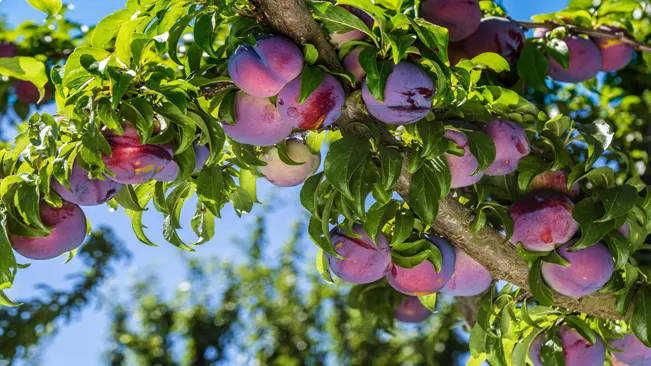
Nutritional Benefits of Plum
| Benefit | Description |
|---|---|
| Nutritional Value | Plums are low in calories but high in vitamins and minerals, including vitamins A, C, and K, potassium, and copper. |
| Antioxidant Properties | They contain high levels of antioxidants, which help combat oxidative stress and reduce inflammation. |
| Improved Digestive Health | Rich in dietary fiber, plums can help regulate the digestive system and prevent constipation. |
| Heart Health | The potassium in plums can help manage high blood pressure, a risk factor for heart disease. |
| Bone Health | Certain substances in plums, like vitamin K and potassium, are known to support bone health. |
| Blood Sugar Control | Plums have a low glycemic index, meaning they can help control blood sugar levels. |
| Improved Cognitive Function | Antioxidants in plums can have a protective effect on brain cells, potentially improving memory and cognitive function. |
| Skin Health | Vitamin C in plums is essential for healthy skin and may help reduce skin damage and wrinkles. |
| Immune Support | The vitamins and antioxidants in plums can boost the immune system. |
| Reduced Risk of Chronic Diseases | Regular consumption of plums might lower the risk of several chronic diseases due to their comprehensive nutrient profile. |
List on How To Grow Plum
- Choosing the Right Variety
- Planting Your Plum Tree
- Caring for Your Plum Tree
- Pest and Disease Management
- Harvesting and Storage
Choosing the Right Variety

Climate Suitability
- Temperate Climates: Most plum varieties prefer temperate climates with distinct seasons. They typically need a period of winter chill to set fruit effectively.
- Varietal Adaptation: Different varieties have different chill hour requirements (the number of hours below a certain temperature). Research or ask local experts about varieties that match your area’s chill hours.
- Heat Tolerance: Some varieties can tolerate warmer climates. If you live in a region with hot summers, look for heat-tolerant plum varieties.
Pollination Requirements
- Self-Pollinating Varieties: Some plum trees are self-fertile, meaning they can produce fruit without the need for another variety for cross-pollination. Examples include ‘Santa Rosa’ and ‘Italian Prune’.
- Cross-Pollination: Many plum varieties require another tree for cross-pollination to bear fruit. It’s important that the two varieties are compatible and flower at the same time. Planting two or more compatible varieties can significantly increase fruit production.
- Pollinator Attraction: Ensuring your garden is attractive to bees and other pollinators will help with the pollination process.
Size and Growth Habit
- Space Consideration: The size of your garden space plays a crucial role in variety selection. Standard plum trees can grow quite large, but there are smaller options.
- Dwarf and Semi-Dwarf Varieties: These smaller trees are ideal for limited spaces. Dwarf varieties can be as short as 8-10 feet, while semi-dwarfs reach about 12-15 feet. They’re also easier to prune and harvest.
- Container Growing: Some dwarf varieties can even be grown in large containers, making them suitable for patios or small gardens.
Planting Your Plum Tree
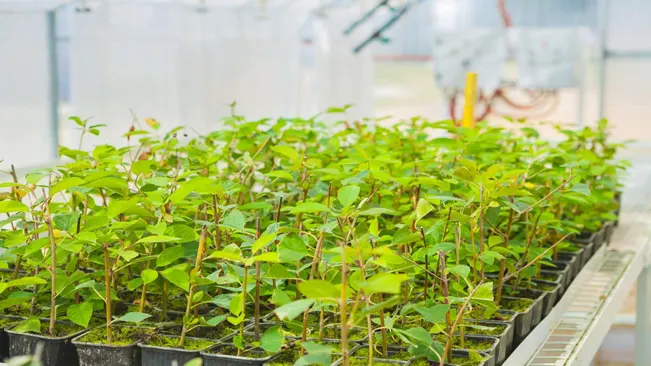
Timing
- Dormant Season Planting: Planting during the dormant season, which is late winter or early spring, is crucial for a few reasons. This timing allows the tree to establish roots in its new location before the stress of the growing season begins. In cooler climates, it’s best to plant after the last hard frost to avoid damage to the young tree.
- Climate Considerations: In regions with milder winters, you might have more flexibility with planting times. However, it’s still best to avoid the hottest part of the year when planting, as the heat can stress the young trees.
Soil Preparation
- Well-Drained, Fertile Soil: Plums do not fare well in waterlogged soil. Ensuring good drainage is key to preventing root diseases. If your soil is heavy clay, consider raising the planting area to improve drainage.
- Soil Testing and Amendment: It’s a good idea to test your soil’s pH and nutrient levels. Plums prefer a slightly acidic to neutral pH (about 5.5 to 6.5). You can amend the soil based on the test results. Organic matter, like compost, not only improves fertility but also enhances soil structure and drainage.
- Mulching: After planting, applying a layer of mulch around the base of the tree can help retain moisture, regulate soil temperature, and reduce weed competition.
Planting Depth and Spacing
- Correct Depth: Planting at the same depth the tree was in the nursery is important. If planted too deep, the tree could suffocate; if too shallow, the roots might not establish properly. You can usually see a color change on the trunk which indicates the previous soil level.
- Spacing Trees: The spacing of 15 to 20 feet apart depends on the variety and the rootstock. Dwarf varieties can be planted closer together, while standard trees need more space. Proper spacing ensures adequate air circulation and sunlight exposure, reducing the risk of disease and improving fruit production.
- Staking: In windy areas or if the soil is loose, staking the tree during its first few years can provide stability and support.
Caring for Your Plum Tree
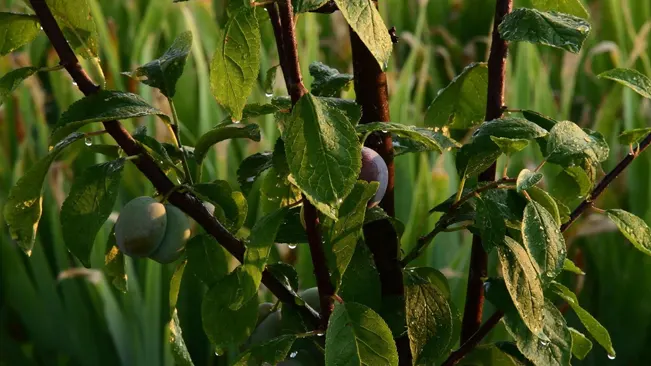
Watering
- Frequency and Amount: In the first few years after planting, plum trees require consistent moisture to establish their root systems. Typically, watering once a week with a deep soak is beneficial. The goal is to moisten the soil to a depth of about 6 inches.
- Monitoring Soil Moisture: It’s important to check the soil moisture regularly. The soil should be moist but not waterlogged. During hot and dry periods, more frequent watering may be necessary.
- Mulching: Applying mulch around the base of the tree can help retain soil moisture and regulate soil temperature. Be sure to keep mulch a few inches away from the trunk to prevent moisture accumulation against the bark.
- Over-Watering Risks: Excessive watering can lead to root rot, a serious condition that can damage or kill the tree. Well-draining soil and careful monitoring are key to preventing this.
Fertilizing
- Type of Fertilizer: A balanced fertilizer, typically marked as 10-10-10 or a similar ratio, is ideal for plum trees. This indicates an equal proportion of nitrogen, phosphorus, and potassium.
- Timing: Fertilize in early spring before new growth begins. This helps the tree during its active growing phase.
- Application Method: Apply the fertilizer around the drip line of the tree, which is the area directly under the outer circumference of the tree branches. Avoid applying it too close to the trunk.
- Soil Testing: It’s advisable to conduct a soil test periodically to understand if your soil lacks any nutrients or if it has an imbalance. Adjust your fertilization based on the test results.
Pruning
- Purpose: Pruning helps in shaping the tree, removing overcrowded or crossing branches, and eliminating dead or diseased wood. It also improves air circulation and sunlight penetration, which are crucial for fruit development.
- Best Time to Prune: Late winter or early spring, just before new growth starts, is the ideal time. This timing helps the tree to quickly heal from the pruning cuts.
- Technique: When pruning, make clean cuts close to the branch collar. Remove any suckers or water sprouts, as these can divert energy away from fruit production.
- Training Young Trees: For young trees, focus on establishing a strong, well-spaced framework of branches. This is known as formative pruning.
- Maintenance Pruning: For mature trees, the aim is to maintain the shape, remove any problematic branches, and thin the interior to allow light and air to penetrate.
Pest and Disease Management
Pest Management
- Aphids:
- Description: Small, soft-bodied insects that can be green, yellow, red, or black. They suck sap from the leaves, causing them to curl and become distorted.
- Management: Introduce natural predators like ladybugs, use insecticidal soaps, or apply neem oil. Regular monitoring and early intervention are key.
- Plum Curculio:
- Description: A small, snout beetle that causes crescent-shaped cuts on young fruit. This results in deformed or prematurely dropping fruits.
- Management: Keep the area around the tree clean and free of debris. Apply insecticides at petal fall and again 10-14 days later, following label instructions.
- Fruit Moths:
- Description: Moths whose larvae burrow into the fruit, causing it to rot.
- Management: Use pheromone traps to monitor moth activity. Apply appropriate insecticides when moths are detected, and maintain good sanitation by removing affected fruits.
Disease Prevention
- Brown Rot:
- Description: A fungal disease that causes fruit to rot and develop a brown, fuzzy coating. It can also affect blossoms and twigs.
- Management: Remove and destroy any affected fruits and branches. Apply fungicides as a preventative measure, especially during wet weather.
- Leaf Curl:
- Description: Caused by a fungus, it leads to distorted and curled leaves which may turn red or purple. It can weaken the tree over time.
- Management: Apply a fungicide in early spring before bud swell. Remove and destroy any affected leaves. Good air circulation and proper pruning can also help prevent this disease.
Harvesting and Storage
When to Harvest
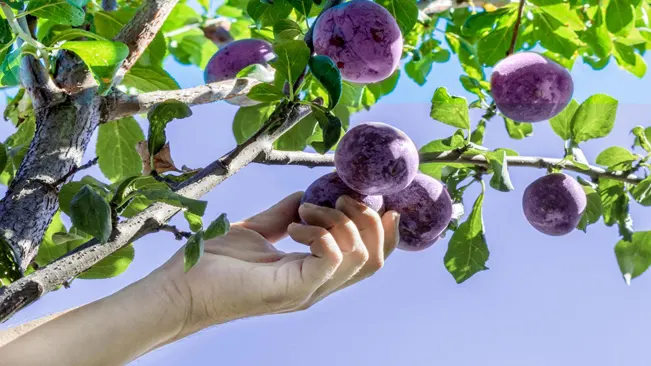
- The precise timing for harvesting plums varies depending on the variety and local climate.
- Generally, plums are ready for harvest in late summer or early fall.
- Signs of ripeness include full color development specific to the variety, a slight give when gently squeezed, and a sweet aroma.
- Plums should come off the tree with a slight twist; if they resist, they may not be fully ripe.
How to Harvest
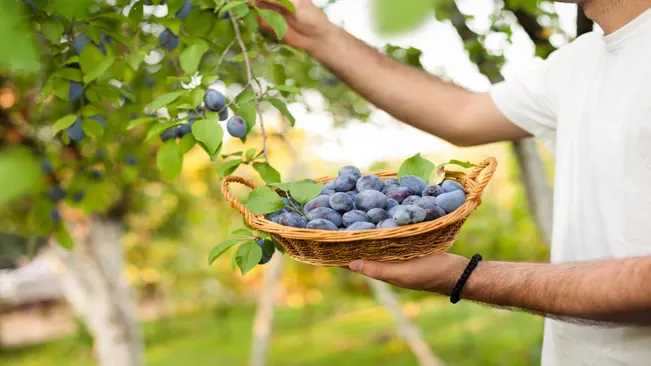
- Use gentle hands to avoid bruising the fruit.
- Hold the branch with one hand and twist the fruit with the other.
- It’s better to harvest plums a little early and allow them to ripen off the tree than to wait too long and have them become overripe or fall off.
Harvesting Tips
- Harvest over a period of several days or even weeks, as not all fruits will ripen at the same time.
- Check trees regularly as the harvest season approaches, as plums can quickly transition from unripe to ripe.
Storing Plums
Short-Term Storage
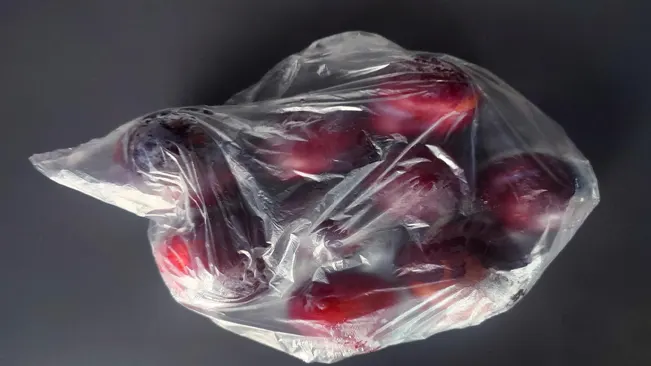
- Freshly harvested plums can last in the refrigerator for about a week.
- Store them in a plastic bag to retain moisture but ensure it has holes to allow for some air circulation.
- Avoid washing plums before refrigerating as moisture can lead to spoilage.
Long-Term Storage

- Canning:
- Plums can be canned whole, halved, or as jam.
- Canned plums can last for a year or more when stored in a cool, dark place.
- Freezing:
- To freeze plums, first wash, dry, and cut them into halves or quarters, removing the pit.
- You can freeze them on a baking sheet initially to prevent sticking and then transfer to airtight containers or freezer bags.
- Frozen plums are great for smoothies, baking, or cooking, and can last up to six months.
- Drying:
- Plums can be dried into prunes.
- Cut them in half, remove the pit, and use a dehydrator or an oven at a low temperature.
- Dried plums can be stored for several months in a cool, dry place.
Conclusion
Growing plums can be a delightful experience yielding sweet rewards. With proper care and attention, your plum trees will provide you with bountiful harvests for many years. Remember, patience and persistence are key, as fruit production may take a few years. Happy gardening!
FAQs (Frequently Asked Questions)
- What is the best time of year to plant plum trees?
Plum trees should be planted during the dormant season, typically in late winter or early spring. - How much space do plum trees need?
Plum trees generally need about 15 to 20 feet of space between them, depending on the variety. - Do plum trees need full sun?
Yes, plum trees require full sun to produce the best fruit. They need at least 6 hours of direct sunlight daily. - How long does it take for a plum tree to bear fruit?
Plum trees typically start bearing fruit in their 4th or 5th year after planting. - Do I need more than one plum tree for pollination?
Some plum varieties are self-pollinating, but many benefit from having another tree nearby for cross-pollination. - How often should I water my plum tree?
Young trees need regular watering, especially during dry periods. Mature trees need less frequent but deep watering. - What kind of soil is best for growing plums?
Plums thrive in well-drained, fertile soil with a pH of 5.5 to 6.5. - How do I prune a plum tree?
Prune in late winter to remove dead or diseased wood and to shape the tree. The goal is to allow sunlight and air to penetrate the canopy. - What are common pests and diseases that affect plum trees?
Common pests include aphids and plum curculio. Major diseases include brown rot and leaf curl. - When is the right time to harvest plums?
Plums are ready to harvest when they are fully colored and slightly soft to the touch. This usually occurs in late summer.

Kristine Moore
Forestry AuthorI'm Kristine Moore, a seasoned garden landscaping professional with over 30 years of experience. My extensive career has been dedicated to transforming outdoor spaces into stunning, sustainable landscapes. With a deep understanding of horticulture, design principles, and environmental stewardship, I have become a respected figure in the field, known for creating harmonious, visually appealing, and eco-friendly gardens. My commitment to excellence and continuous learning in landscaping trends and techniques has solidified my reputation as an expert in garden design and implementation.

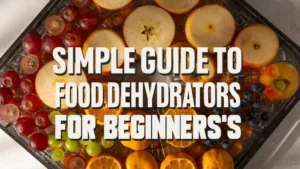


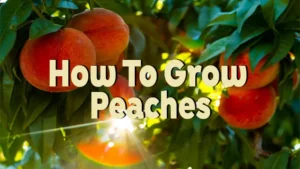
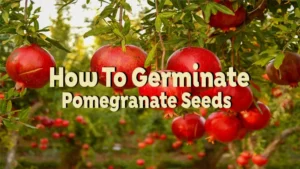

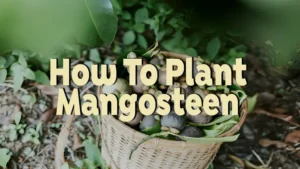
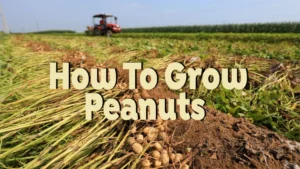




Leave your comment